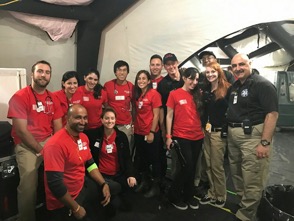Emergency Care at a Music Festival: A First-Person Report
Over the past 5 to 10 years, electronic dance music (EDM) festivals have grown in popularity in the United States, developing into massive, multiday events drawing crowds of tens of thousands of attendees.1 The nature of these events—ie, long outdoor performances attended by a primarily youthful audience in sometimes austere environments1—presents several unique challenges to local EDs, including the ability to effectively manage mass cases of polysubstance abuse, exposure to extremes of weather, and dehydration.

Since 2011, Orlando, Florida has been host to a popular annual EDM festival—one that has nearly doubled in size since its inception. In 2015, both the volume of 911 calls related to this event and number of attendees seeking care at the city’s first aid stations located at the festival overwhelmed our local emergency medical services (EMS) system and the nearest ED. The acuity of these patient interactions ranged from cases that could have been treated and released on-site to several critical care cases, including two fatalities.
In advance of the November 2016 festival, event staff, EMS, and hospital planners worked together to improve attendee safety and to avoid unnecessary admissions to the area receiving hospital, Orlando Regional Medical Center (ORMC). This cooperative endeavor resulted in the creation of a unique, fully staffed field hospital that was seamlessly integrated with EMS personnel and in constant communication with ORMC. The implementation of a field hospital on-site at the event decreased mortality and provided a reasonable and manageable way to safely treat and release patients who would have otherwise required transportation to the receiving center.
The 2016 Festival: Background
Location and Setup
In November 2016, the EDM festival was held at its usual location in the fields and areas surrounding a large stadium near downtown Orlando. Although the fall season in Florida can be unpredictable, the weather during the day is typically hot and humid, with temperatures averaging 80°F to 90°F. The festival took place over a 2-day period between noon and midnight each day. Unlike similar multiday festivals that run over a consecutive period of 24 to 48 hours, there were no overnight activities at this event.
Whereas other similar festivals often take place in more remote, austere environments such as deserts or forests, the Orlando EDM festival was held within the city but did not have on-site overnight accommodations. While this location eased some of our concerns, overnight closure of the field hospital altered our approach to patient management. When the facility closed, many patients who may have been observed overnight and subsequently released, required transport to the hospital for further observation and monitoring.
Attendees and Layout
The festival drew approximately 30,000 to 40,000 attendees each day, with multiple stages and fairground-type attractions spread over approximately 45 acres. The area was transformed by massive stages and production equipment, including complex lighting, pyrotechnics, expansive sound systems, and carnival rides. There were also dozens of on-site kiosks and pop-up structures selling food, merchandise, and alcoholic and nonalcoholic beverages.
Substance Abuse and Elemental Exposures
Although festival planners expressly prohibit illicit drug use at EDM events, substance use has been and continues to be prevalent at these types of festivals—particularly the use of alcohol, amphetamines such as 3,4-methylenedioxymethamphetamine (MDMA, also known as “ecstasy” and “Molly”), lysergic acid diethylamide (LSD), cocaine, and marijuana (Table).2
In addition to substance abuse, the young attendees at this event are often scantily clad, increasing exposure to the elements. Although days are typically hot in Orlando in November, nights can cool off substantially, and exposure to colder temperatures was one of the more common medical complaints.







